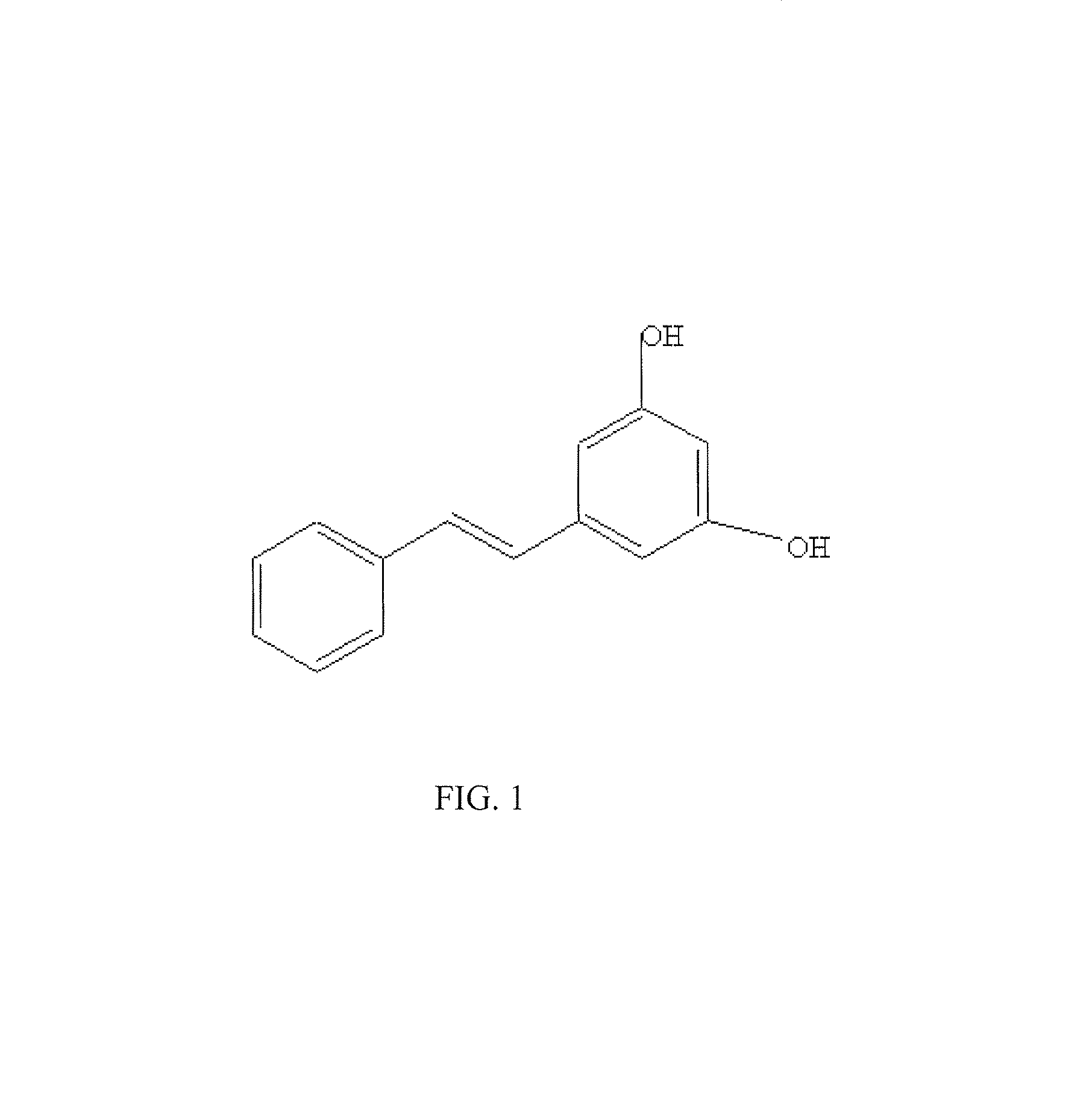Metabolically engineered cells for the production of pinosylvin
a technology of pinosylvin and metabolic engineered cells, which is applied in the direction of lyase, ligase, enzymology, etc., can solve the problems of affecting the commercial application of such a yeast, affecting the yield of said extraction, and affecting the production efficiency of said pinosylvin
- Summary
- Abstract
- Description
- Claims
- Application Information
AI Technical Summary
Benefits of technology
Problems solved by technology
Method used
Image
Examples
example 1
Isolation of Genes Encoding PAL, 4CL, RES and VST1
[0075]Phenylalanine ammonia lyase (PAL2) (Cochrane et al., 2004; SEQ ID NO: 1, 2), 4-coumarate:CoenzymeA ligase (4CL1) (Hamberger and Hahlbrock 2004; Ehlting et al., 1999; SEQ ID NO: 3, 4) were isolated via PCR from A. thaliana cDNA (BioCat, Heidelberg, Germany) using the primers in table 1. PAL2 and 4CL1 were chosen amongst several A. thaliana homologues due to favourable kinetic parameters towards cinnamic acid and cinnamoyl-CoA, respectively (Cochrane et al., 2004; Hamberger and Hahlbrock 2004; Ehlting et al., 1999).
[0076]The coding sequence of resveratrol synthase (RES) from Rhubarb, Rheum tataricum (Samappito et al., 2003; SEQ ID NO: 5, 6) was codon optimized for expression in S. cerevisiae using the online service backtranslation tool at www.entelechon.com, yielding sequence SEQ ID NO: 7, 8. Oligos for the synthetic gene assembly were constructed at MWG Biotech and the synthetic gene was assembled by PCR using a slightly modifi...
example 2
Construction of a Yeast Vector for Expression of PAL2
[0080]The gene encoding PAL2, isolated as described in example 1, was reamplified by PCR using forward- and reverse primers, with 5′ overhangs containing EcoR1 and Spe1 restriction sites (table 1). The amplified PAL2 PCR product was digested with EcoR1 / Spe1 and ligated into EcoR1 / Spe1 digested pESC-URA vector (Stratagene), resulting in vector pESC-URA-PAL2. The sequence of the gene was verified by sequencing of two different clones.
example 3
Construction of a Yeast Vector for Expression of 4CL1
[0081]The gene encoding 4CL1 was isolated as described in example 1. The amplified 4CL1 PCR-product was digested with Xba1 / BamH1 and ligated into Spe1 / BglII digested pESC-TRP vector (Stratagene), resulting in vector pESC-TRP-4CL1. Two different clones of pESC-TRP-4CL1 were sequenced to verify the sequence of the cloned gene.
PUM
| Property | Measurement | Unit |
|---|---|---|
| elution time | aaaaa | aaaaa |
| retention time | aaaaa | aaaaa |
| concentration | aaaaa | aaaaa |
Abstract
Description
Claims
Application Information
 Login to View More
Login to View More - R&D
- Intellectual Property
- Life Sciences
- Materials
- Tech Scout
- Unparalleled Data Quality
- Higher Quality Content
- 60% Fewer Hallucinations
Browse by: Latest US Patents, China's latest patents, Technical Efficacy Thesaurus, Application Domain, Technology Topic, Popular Technical Reports.
© 2025 PatSnap. All rights reserved.Legal|Privacy policy|Modern Slavery Act Transparency Statement|Sitemap|About US| Contact US: help@patsnap.com



